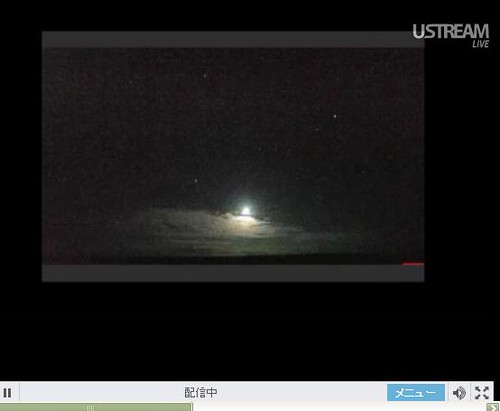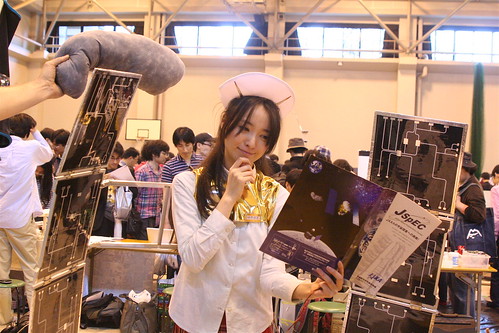If the capsule indeed carries a sample of astroid, it will be a big scientific success as it will have precious clues to understand the origin and evolution of the Solar System.
JAXA's website on Hayabusa
Spacecraft Hayabusa
BBC "Japanese Hayabusa asteroid mission comes home"
BBC "Who thought asteroids were dull, dumb rocks?"
BBC "A perfect view of the asteroid capsule's Earth return"
BBC "Who thought asteroids were dull, dumb rocks?"
BBC "A perfect view of the asteroid capsule's Earth return"
Asteroid Itokawa

(photo:JAXA Hayabusa Mission press kit)
Although this mission demonstrates an excellent example of how Japanese scientists had overcome difficulties and achieved a world class success, none of the TV stations reported this live - yes, they were reporting world cup- and people watched live streams from Ustream and NicoNicoDouga and shared their excitement on Twitter.
This is an archive of Ustream by Wakayama University.
Screenshot of Hayabusa's re-entry and turning into firebolt

Control room was Ustreamed as well, with over 63,000 viewers
As you can imagine, people were tweeting heavily about Hayabusa, and Hayabusa was tweeting too. "Hi everyone, I'm home" tweet by Hayabusa.

(c)Jaxa on Twitpic
You can see how Japanese netizens loved Hayabusa- Hayabusa cosplay of a girl with Itokawa at Make Tokyo Meeting 05.
Google Japan's doodle was Hayabusa
Someone created this "Welcome home" message for Hayabusa using Google Earth.
A figure characterizing Hayabusa is going to be on sale.
http://journal.mycom.co.jp/news/2010/06/10/059/index.html
Overview on HAYABUSA from JAXA's website:
May 9, 2003 Launched by the M-V-5 Rocket from Kagoshima Space Center.
May 27, 2003 Ion Engine operation started.
May 19, 2004 Orbit transfer using the Electric Propelled Delta-V Earth Gravity Assist
July 29, 2005 Performed the Star Tracker imaging of Itokawa.
September 12, 2005 Arrived at Itokawa. (about 20km away)
September 30, 2005 Arrived at the Home Position (about 7km away).
November 12, 2005 Released the probing robot ”Minerva”.
November 20, 2005 Performed the first touch down and release of the target marker with 880,000 autographs inside.
November 26, 2005 Performed the second touchdown.
December 8, 2005 Lost communication with the earth due to operation rupture by fuel leakage.
January 26, 2006 Resumed communication and operation.
January 18, 2007 Sample-catcher was actually transferred into the recovery capsule, and latched and sealed.
February, 2007 The ion engines ignited and operated again.
April 25, 2007 The homeward journey with an ion engine drive was started.
October 18, 2007 Finished first phase orbit maneuver toward Earth.
End of May, 2008 Reached the farthest deep space from the Earth.
February 4, 2009 Firing ion engine and starting second phase orbit maneuver to return to Earth.
November 4, 2009 Ion engine anomaly.
November 19, 2009 Resumed cruise by combining two partially working ion engines.
March 27, 2010 Finished second phase orbit maneuver toward Earth.
April to June, 2010 Trajectory Correction Maneuvers (TCMs)
June, 2010 Back to the Earth , capsule recovered.





2 件のコメント:
Hi Fumi-san,
Love this entry. I didn't know about it, but this is quite exciting. I will reblog this when I get a chance : )
Thank you Mie-san! I was really excited last night about this, and it would be great if you can reblog and let more people know about it :)
コメントを投稿